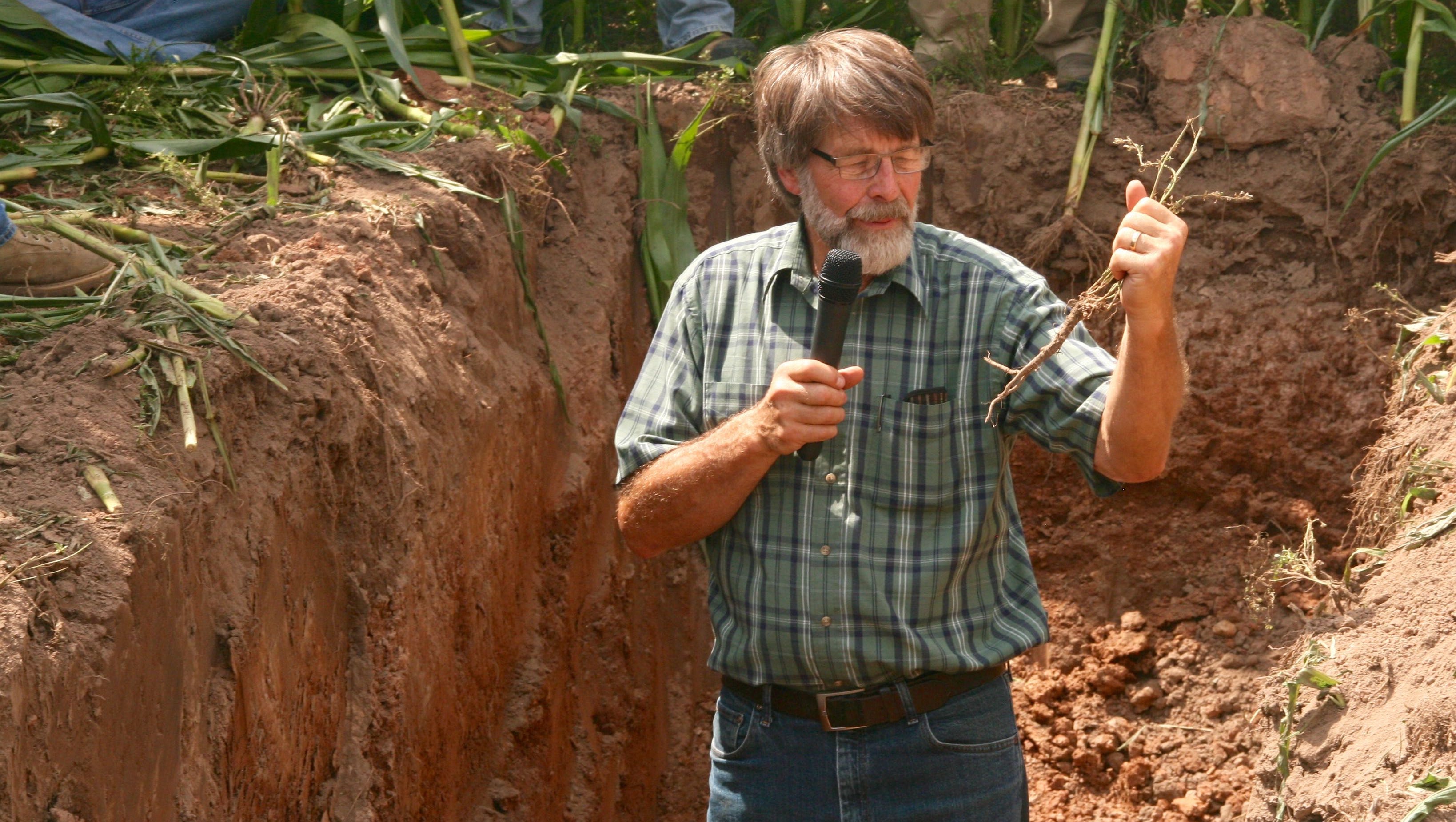Alfalfa making inroads as cover crop for corn

MANAWA – Cover crops are utilized by many Wisconsin farmers, and are usually planted in the late summer or fall around harvest before spring planting of the following year’s crops.
They may be used to reduce wind or water erosion by establishing cover after a minimal residue crop, to use up excess nutrients in the soil profile, for weed suppression, to provide nutrients for the next crop, to increase carbon sequestration and improve soil structure.
Common cover crops used in Wisconsin include winter hardy plants such as barley, rye and wheat.
However, a recent field day sponsored by the Waupaca County Forage Council focused on the potential of using alfalfa as a cover crop for corn.
Nearly 90 area farmers and others involved in crop production checked out a soil pit on the Dan and Ruth Boerst farm west of Manawa to get a closer look at what was happening below the surface.
Field history
Nate Nysse of Tilth Agronomy, the Boerst’s crop consultant, described the field’s recent history.
“Dan wanted to try to grow a corn crop simultaneously with alfalfa, and he wanted to push the limits of double-cropping,” said Nysse. “This spring we walked the field and found only four to five plants per square foot that we expected to yield about four tons of dry matter.”
After three years it was was considered to be a marginal stand, and the first thought was take to it out and no-till corn into the field. But Boerst wanted to see if he could have the best of both worlds.
“He wanted to leave some of the alfalfa alive, so we came up with a plan to suppress the alfalfa, using a citric acid based product without terminating it in some parts of the field, and to totally wipe out the alfalfa in other parts of the field using Roundup®,” Nysse explained.
After taking off the first alfalfa crop, the field was sprayed in late May, and the corn was no-till planted. Urea was added at a rate of 125 pounds per acre.
“The goal was to improve soil health and grow nitrogen for the corn crop,” Nysse related.
Pit analysis
Crop consultant Jim Martindale, with Soil Regeneration Unlimited and Curse Buster Equipment, began his evaluation of the alfalfa plants’ root system looking at cross-sections in the soil pit that had been dug to a depth of more than four feet.
First, he debunked a myth that corn and alfalfa compete for available moisture.
“Alfalfa will transpire moisture at 2.5 times the rate corn requires. and corn has the ability to take that moisture out of the air,” he emphasized. “So rather than competing with the corn for moisture alfalfa serves a a deep-well pump pulling moisture from deep within the soil profile.”
According to Martindale, if it has an adequate root system, corn usually does not run out of moisture.
“What we typically characterize as moisture stress is usually a carbon dioxide stress, which is due to a lack of moisture that causes the production of waste gases in the soil (CO2) to drop to zero,” he explained.
Root mass
“In order for perennial plants, like alfalfa, to persist they have to be able to regenerate their root mass,” Martindale stressed
He noted that alfalfa has a tap root that’s designed to go deep into the ground to feed on water and soluble nutrients, and also a lateral root mass.
It could be readily seen that most of the alfalfa plants in the pit were devoid of lateral roots in the top three inches of the field – a clear indication that the stand was in a state of decline, according to Martindale.
“If the plants don’t get to the flower (reproductive) stage, lateral roots don’t develop,” he said.
Martindale also stressed that the roots may be unable to feed due to lack of air in the soil. “Soil needs to have 50 percent air for proper root growth, and heavy rains contribute to the lack of lateral root mass because it makes for a poor seed bed.” he said.
Martindale recommends using vertical tillage tools on alfalfa, like the Curse Buster, which, he says, can increase effective tillage by nearly 50 percent without disturbing root systems.
“They are ideal for weeding growing crops, incorporating seed and soil amendments, and creating a compaction-free seedbed while retaining the soil aeration of hay-crop forage capabilities,” Martindale added.